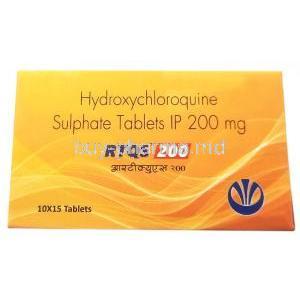Chloroquine
Uses
How it Works
Common Side effects
Some of the potential side effects of Chloroquine can include the symptoms below;
Abdominal pain,
Mood changes,
Loss of appetite,
Hair loss,
Itching,
Hearing disorder,
Blurred vision,
Visual disturbance,
Headache,
Bloating,
Vomiting,
Dizziness,
Muscle weakness,
Altered heart rate,
Photopsia,
Eye disorder,
Drowsiness,
Rash
Introduction
Chloroquine is an aminoquinoline. It is an antimalarial drug used to treat acute attacks of malaria caused be certain malarial parasites. The malarial parasite enters the human body through the mosquito bite, from which it enters into the body tissues such as the blood and liver where they multiply.
Use
Chloroquine is primarily used to prevent and treat malarial infection. It is also used to treat certain types of parasitic infections such as hepatic amebiasis. It is also an anti-inflammatory substance used in the treatment of rheumatoid arthritis and lupus erythematosus. This drug accumulates in the acidic food vacuoles of the trophozoite stage of the malarial parasites, which are already inhabiting the red blood cells. In the food vacuoles, the drug prevents the degradation of the hemoglobin molecule which is necessary for the protein build up against the parasite.
Dosage and administration
Take this medication orally, usually with food to prevent gastric problems, exactly as prescribed by the doctor. The dose and length of treatment depends on the patient’s medical condition, whether it is used for preventing or treating the illness, and response to treatment.
Usual Adult Dose for Malaria:
For 60 kg body weight or more:
1 g chloroquine phosphate orally as an initial dose, followed by 500 mg orally after 6 to 8 hours, then 500 mg orally once a day on the next 2 consecutive days. Total dose: 2.5 g chloroquine phosphate (1.5 gm base) in 3 days.
For less than 60 kg body weight:
The first dose is 16.7 mg chloroquine phosphate/kg to be taken orally followed by 8.3 mg/kg of second, third, and fourth dose after 6, 24, and 36 hours after taking the first dose. Total dose: 41.7 mg chloroquine phosphate/kg (25 mg base/kg) in 3 days.
Usual Adult Dose for Amebiasis:
1 g chloroquine phosphate (600 mg base) orally once a day, for 2 days followed by 500 mg chloroquine phosphate (300 mg base) orally once a day, for 2 to 3 weeks.
Warning
This medication is known to make you dizzy, therefore, it is advised that you not drive after taking the medicine.
The medication is known to make your skin more sensitive to the sun. Avoid prolonged exposure to the sun and use protective measures when outdoors.
Pregnant women and breast feeding mothers are to use this medication only if it has been prescribed by the doctor.
In case of a severe reaction to the drug like chest pain, skin rashes, dizziness, breathing problems, fainting, vision changes or complete blindness, discontinue the drug and seek emergency medical help immediately.
Side effects
Vomiting
Diarrhea
Headaches
Abdominal cramps
Dermatitis
Psoriasis
Fever with chills and sore throat
Hearing loss
Blurred vision














